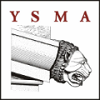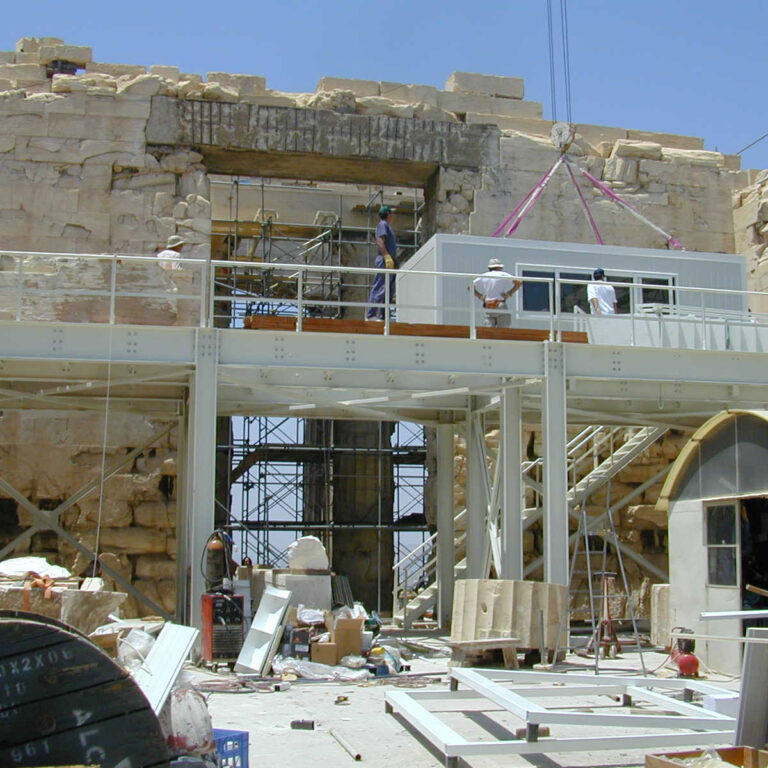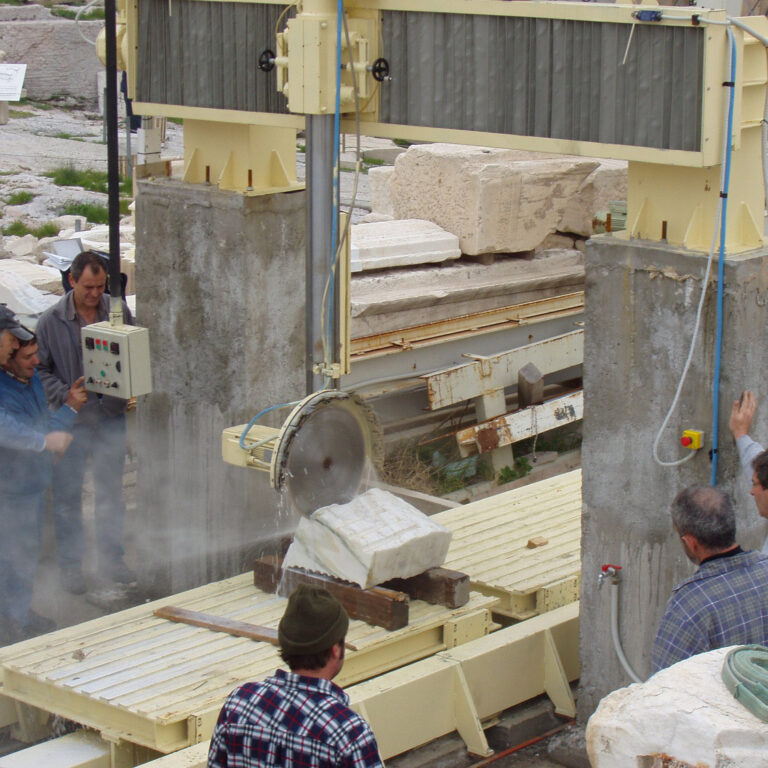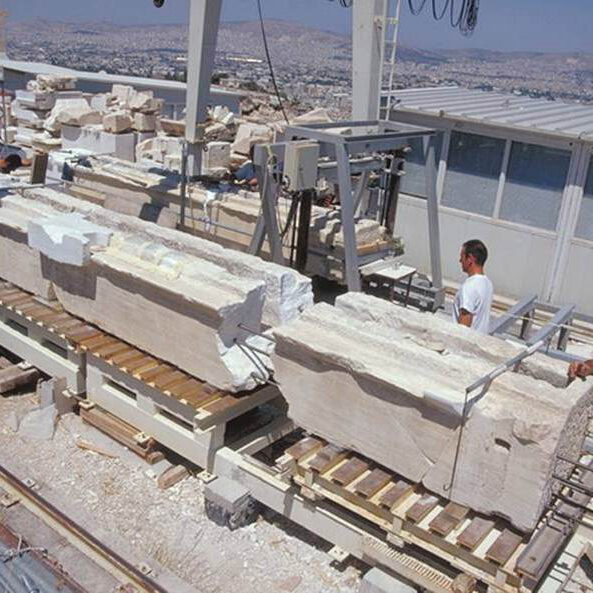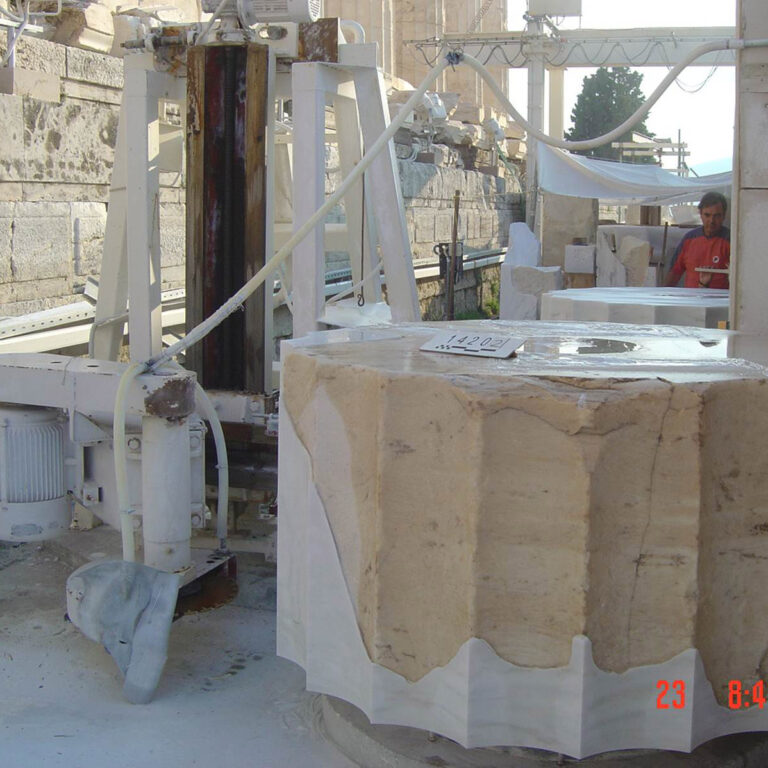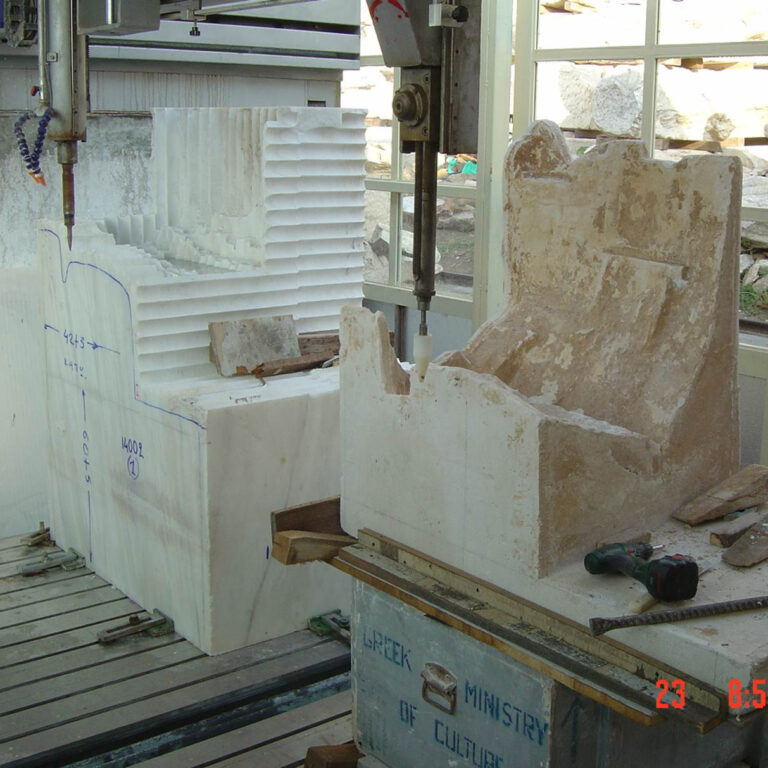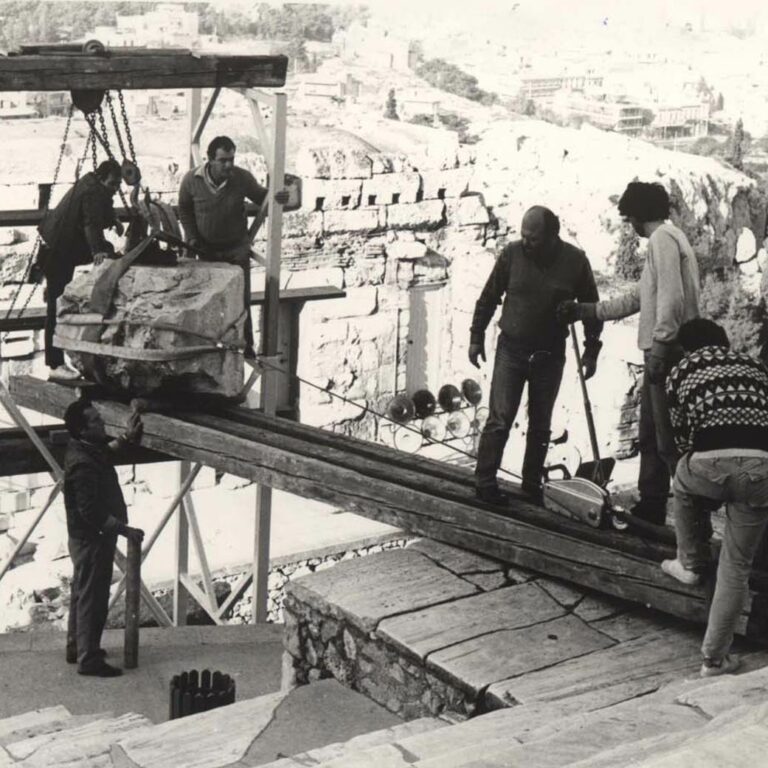
Worksite of a monument is the term used for the aggregate of material and technical infrastructure that supports the work of conservation and restoration of the monument itself. Organizing a worksite is a complex operation comprising the choice of technical equipment, arrangement of the workplace and establishing the programme for the works. Where the restoration of monuments is concerned, the special character of the buildings themselves imposes limits. Respect for the historical and artistic value of the monument demands particular care in the study for the material and technical infrastructure. The area available for installing the necessary technical equipment is usually limited and frequently the approach and transportation of the machinery to the work area is difficult. Moreover, the presence of visitors while work is in process requires special adjustments. Whereas in an ordinary construction project the installations and technical means used are well known and readily available, for the restoration of monuments special systems have to be devised that will expedite the works, without damaging the monuments or interfering with them aesthetically.
Included among the technical means of the worksite are: hoisting systems for dismantling and resetting architectural members (cranes, bridge-cranes), fixtures for sculpting and working the members and fillings, copying machines (pantographs), special pointing devices, specially built equipment for matching and joining the members, systems for moving stones and transporting material and equipment, the necessary equipment for measuring and plotting, workshops and offices for the staff, special tools etc.
In choosing the form of the worksite installations, the aim is:
- to employ technical means that work easily and the installation of which is reversible.
- that the form of the installations and the material of which they are made should interfere aesthetically as little as possible with the monuments.
- to assure the protection of the monument itself and ancient remains in the area.
- to assure the protection of those working on the site and of visitors to the monuments as well.
Of great importance for the successful and safe performance of a work of anastelosis is the choice of a suitable hoisting system, for which the civil engineer of the project is responsible. Within the past years the following systems have been used at the Acropolis worksites:
- Bridge-crane, Portal Type Π, with (travelling on) rails on the ground.
- Gantry-cranes on elevated rails.
- Derrick type crane with a fixed base, slewing engine-house and luffing jib.
- Slewing construction crane MR90 with a low mast, luffing jib, and an electrically powered on a travelling base on rails.
Particularly important in order to take full advantage of the worksite systems is the effective organizing of the works by the civil engineer of the project. The driving force for success of the whole effort lies in the consistent progression of the works, avoidance of overlapping and particularly the response of the human manpower.
The electro/mechanical team
The great expansion of restoration works on the Acropolis and the application of modern methods and means made it necessary to have a team and technical office responsible for the following:
– Defining specifications and investigating the market for available equipment or designing mechanical equipment to be constructed in order to facilitate the restoration works.
– Designing and constructing necessary networks and infrastructure, for the co-ordinated and effective functioning of the worksite and technical offices of the works.
– Repair and maintenance of the installations, machinery, and hand-held equipment of the worksites.
The electro/mechanical (E/M) team of the Acropolis is part of the Support Section of the YSMA. The specific tasks it carries out are the following:
Before drawing up (defining) specifications and drafting plans or designing new equipment, opinions are exchanged about the new installations or equipment, the purpose always being to facilitate and accelerate the restoration works. The approval of any proposal necessarily presupposes (presumes) that the quality of work will be retained or improved. Once it has been determined that the desired equipment is available in the market the specifications are drafted (set). If it is a question of designing an original construction, plans (drawings) are drawn (prepared). At this stage, there is constant communication (interactive contact) with the worksite so that the planned machine (being designed) can meet the requirements as fully (closely) as possible. The same applies to the infrastructure networks and communications.
The upkeep (maintenance) of the machines and installations has to insure their constant availability for the works, at full strength and with the greatest possible reliability. If there are problems with the machinery, the E/M team intervenes immediately for repairs so as to have the least possible delay in the works.
A number of interesting facts emerge from the drafting of specifications and the designing (Interesting conclusions can be drawn from the specifications set or the design factors) : The specifications for commercial machines may differ from what is in the market (our requirements) , because of the unique character of the works: a typical example is provided by the hoisting machines, which, apart from transferring objects, are used in the works for dismantling and resetting (disassembling and re-assembling the) architectural members. The application requires (availability of) very low speeds, smooth acceleration and, overall, great accuracy of operation (“inching”). In view of this, the hoisting machinery must be chosen with great care.
Of considerable interest is the pantograph (copying machine) used in the worksite of the Parthenon for the construction of fillings in the architectural members, using (as master) a cast of the break (fractured) surface of the (broken) ancient member. The machine required differs from anything to be found in the market, at a number of decisive points, because of the specifications: the great weight and proportions (volume) of the fillings to be made, the strong (excessive) relief, with the sharply (steeply) slanting surfaces and the depth to be worked, and, above all, the “blind” spots (cavities) where it is impossible to introduce a copying or cutting tool without changing the direction of attack (access). On the basis of the YSMA stipulations (specifications) and in collaboration with the constructor, an original pantograph (copying machine) was devised (designed and built), with two strong platforms (stainless steel tables) (one for the cast and one for the new marble), that can be retracted (tilted in any direction) but always parallel to each other, so as to allow the tool to enter even the “blind” spots, while the point and the drill (copying head and the cutting tool) are always in precisely corresponding positions on both cast and marble.
Among the machines and applications (fixtures) constructed on the basis of the YSMA plans as designed by YSMA engineers, we may include the equipment (fixture) for (matching) and joining (pieces of marble members – ancient and new -) using pairs of a fixed and a rolling platform perfectly alligned, numbers of which have been constructed and which have systematized the task of joining ancient members with new fillings. For dismantling and resetting the south wall of the east portico of the Propylaia, two grip-clamps were devised (designed) for grasping wall blocks from the side (by friction only), without other assistance and in limited approach space.
A machine was designed specifically for cutting the column flutes in order to meet the needs in the north colonnade of the Parthenon. It is a combination of a vertical lathe and a cutting disk that can work (cut) the multi-sided (lateral) outer surfaces of the column drums which are shaped like a truncated (to the shape of a tapered) cone, and then cut (successive) flutes (along the lateral surface) in the form of an arc of a circle, (that approximates) their final form profile to within a few mm. This (operation produces semi-finished drums and) greatly accelerates the reconstruction of the column drums with marble fillings. Only the finishing of the flutes by hand in situ remains to be done.
